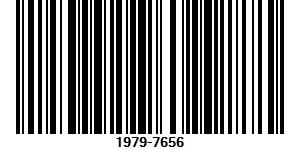MONITORING PEMAKAIAN ARUS DAN PENGENDALI INTENSITAS CAHAYA PADA LAMPU BERBASIS INTERNET OF THINGS MENGGUNAKAN ANDROID
DOI:
https://doi.org/10.30989/teknomatika.v14i1.1100Kata Kunci:
Internet of Things, wi-fi, lights, apps, androidAbstrak
The switch on and off of a light takes time when it has to be done in a lot of space. Not to mention in a multistoried building that had to turn the lights on and off on each floor of the building and in each room. Not only that, the omission in turning on and off lights would be very dangerous if left unchecked. Besides electrical waste, a fire starter will occur when lights will run continuously. To make it easier for users to engage in daily activities in turn off lights especially in many areas, it is suggested in this study that a prototype of the current monitoring system and light intensity control for lights based on the Internet of things which the design would be integrated with wi-fi and android. The prototype was built to provide the solution by turning off and turning on the lights without having to move from place to place. Designed by simple looks, the user can control it via the android. With the prototypes and created systems it is expected to make user activity easier and minimise the user negligence factor in turning on and off lights that can overload electricity to fire triggers.
Referensi
[2] Y. Efendi, “Internet of Things (Iot) Sistem Pengendalian Lampu Menggunakan Raspberry Pi Berbasis Mobile,” Jurnal Ilmiah Ilmu Komputer, vol. 4, no. 1, 2018, [Online]. Available: http://ejournal.fikom-unasman.ac.id
[3] B. Artono and R. G. Putra, “Penerapan Internet Of Things (IoT) Untuk Kontrol Lampu Menggunakan Arduino Berbasis Web,” Jurnal Teknologi Informasi dan Terapan, vol. 5, no. 1, pp. 9–16, Apr. 2019, doi: 10.25047/jtit.v5i1.73.
[4] A. Hanafi and A. Dwimawan, “Sistem Informasi Geografis Pemetaan Kejahatan Klitih di Yogyakarta Menggunakan Google Maps Api,” 1991. [Online]. Available: http://ejournal.unjaya.ac.id/index.php/Teknomatika/
[5] S. L. Keoh, S. S. Kumar, and H. Tschofenig, “Securing the Internet of Things: A Standardization Perspective,” IEEE Internet Things J, vol. 1, no. 3, pp. 265–275, Jun. 2014, doi: 10.1109/JIOT.2014.2323395.
[6] C. Wang, M. Daneshmand, M. Dohler, X. Mao, R. Q. Hu, and H. Wang, “Guest Editorial - Special Issue on Internet of Things (IoT): Architecture, Protocols and Services,” IEEE Sens J, vol. 13, no. 10, pp. 3505–3510, Oct. 2013, doi: 10.1109/JSEN.2013.2274906.
[7] S. Rangkuti, Arduino & Proteus Simulasi dan Praktik, 1st ed. Bandung: Informatika Bandung., 2016.
[8] R. Syaputra, Modul Programming Android dengan Android Studio - I. Jonggol: Modul Bahan Ajar SMK TI Madinatul Qur’an., 2015.
[9] S. Wasista, Setiawardhana, S. D. Ayu, and E. Susanto, Aplikasi Internet of Things (IoT) dengan ARDUINO dan ANDROID, 1st ed. Surabaya: Penerbit Deepublish, 2019.
[10] W. M. Fajar and Hidayat, Mudah Belajar Mikrokontroller Arduino, 1st ed. Bandung: Informatika Bandung, 2017.










